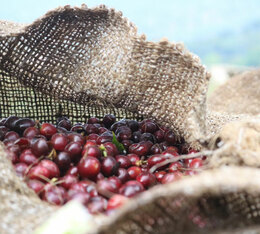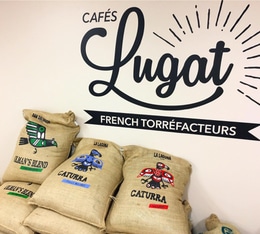15% off this product
using code UK25XMAS15
Manage cookies
Essential Cookies
Analytical Cookies
Advertising Cookies
Social cookies
Our partners
Essential Cookies
Analytical Cookies
Advertising Cookies
Identifying a single session to dissociate active users
Splitting server's loadings
Storing users' tracking preferences
Tracking clicks and Add-to-Cart clicks
Storing users' profile information
Stocking viewed products
Measuring the performance impact of scripts
Optimising website loading speed and execution of personalised content
Storing usernames
Optimising the website's performances
Identifying a single session to dissociate active users
Splitting traffic for users from page to page
Analysing users' behaviour
Trying out different outcomes on a same page to select the most intuitive and ergonomic version
Tracking active users on several different sites based on their browsing preferences
Measuring the audience by tracing active users' browsing history
Stocking the number of viewed pages by an active user
Assigning a grade depending on the number of viewed pages
Saving the type of URL settings used (ex: utm_source)
Tracing events such as clicks, printing, add-to-cart clicks
Identifying a single session to dissociate active users
Stocking viewed products, products added to the basket or bought
Gathering data linked to browsing activity to offer similar or complimentary products on partners' sites
Enabling the diffusion of targeted ads
Tracking clicks, Add-to-Cart clicks and sales made through Facebook ads and its partners sites
Presenting useful and relevant ads on Facebook and its partners' sites
Tracking clicks, Add-to-Cart clicks and sales made through Google ads and its partners' sites
Measuring the ad's efficiency regarding the website's past orders
Used by Pinterest to track services' use
Used by social media network LinkedIn in order to track the use of integrated services
Used by Facebook to deliver a series of advertisement products such as real time bidding from third party advertisers
Used by for targeting purposes to build a profile of the website visitor's interests in order to show relevant & personalised Google advertising
Used for security purposes to store digitally signed and encrypted records of a user's Google account ID and most recent sign-in time which allows Google to authenticate users, prevent fraudulent use of login credentials, and protect user data from unauthorised parties. This can also be used for targeting purposes to show relevant & personalised ad content.
Enable ad delivery or retargeting, store user preferences
Used to enable ad delivery or retargeting.
Used to provide fraud prevention.
Used to store browser details.
This cookie is set by Twitter to identify and track the website visitor.
Used to store a unique user ID.
This cookie lets website visitors use Twitter-related features from within the web page they are visiting.
These cookies enable us to track visitor activity from our Twitter ads on our website, and also to allow users to share content from our websites.
Allows following our Twitter account easily sharing content via Twitter, and displaying the latest tweet.
This cookie is generally provided by Twitter to monitor referral links and login status. They are usually present when there is a "Tweet This" button or other Twitter widget present on the site.
Remembers which pages you have viewed.
Determines whether you are logged in to twitter during your browser session.
It collects information about the pages viewed by the user in the session

Specialty Coffee : Among the best coffees in the world, from a terroir with a history and traceability. They represent less than 10% of the world's production and are assessed by professional tasters. These are flawless coffees that offer us unique tasting notes.

Exceptional Coffee : They reflect their terroir by guaranteeing a fairer supply chain, better traceability and an exceptional cup. With a score of over 80/100, these coffees are the gateway to specialty coffee.
Enjoy the result of high quality coffee beans in your cup, freshly roasted at MaxiCoffee.

Each coffee is unique! Its terroir and specificities give it its identity.

This 100% Arabica coffee offers an aromatic and floral first impression with a hint of acidity. Expect a full-bodied coffee with citrus notes. A very expressive cup with lovely sweetness.
This is a single-origin coffee, renowned for the distinctiveness of its terroir – a mark of high-quality coffee.

The Sidamo region is located in southern Ethiopia, near the Kenyan border. It takes its name from an ethnic group: the Sidamas, a people living in south-western Ethiopia. The south of the country is a privileged and exclusive area for coffee growing.
The coffee grows under the shade of forest trees and is hand-picked selectively. It is then processed using the washed method, which gives it a wonderfully bright acidity.
Moka Sidamo accounts for 11% of Ethiopia’s coffee production. The washed variety is highly sought after.

Cafés Lugat is a speciality coffee brand dedicated to offering unique, tailor-roasted coffees with passion and commitment. It offers a range of whole bean, ground, and capsule coffees. Since every coffee has its own story and identity, Cafés Lugat does everything possible to share its richness and secrets.
Cafés Lugat boasts a team of enthusiastic young coffee roasters who select exceptional coffees and create irresistible recipes just for you. Through their range of coffee beans, ground coffees and Nespresso* Original compatible capsules, their mission is to bring you the unique flavour and aromas from the world's best coffee-producing areas!
Their passion for coffee has even won them awards. Marco, the brand's head roaster, was awarded the French Barista Championship title at the 2017 French Championships.
15% off this product
using code UK25XMAS15
15% off this product
using code UK25XMAS15
15% off this product
using code UK25XMAS15
15% off this product
using code UK25XMAS15